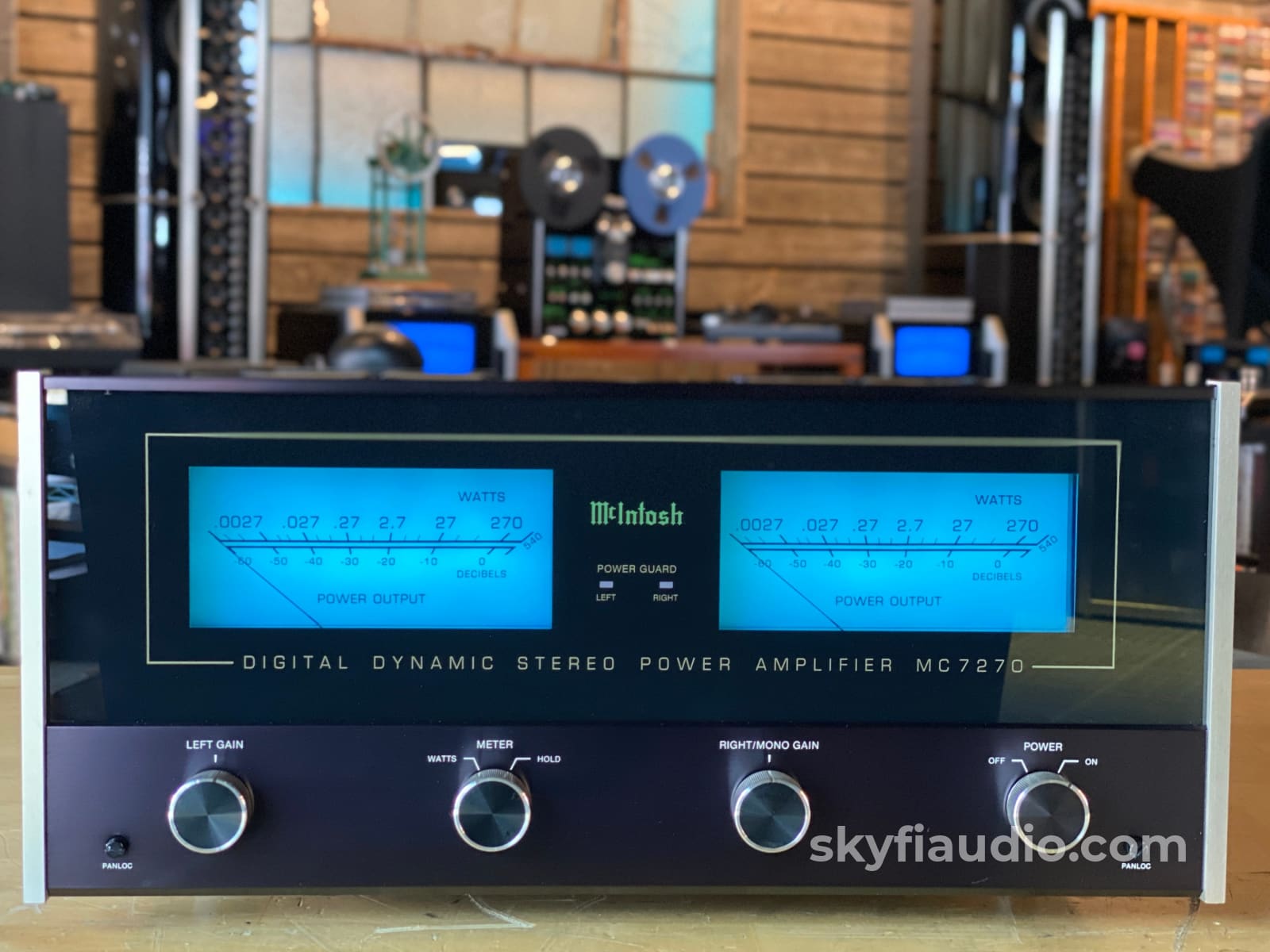

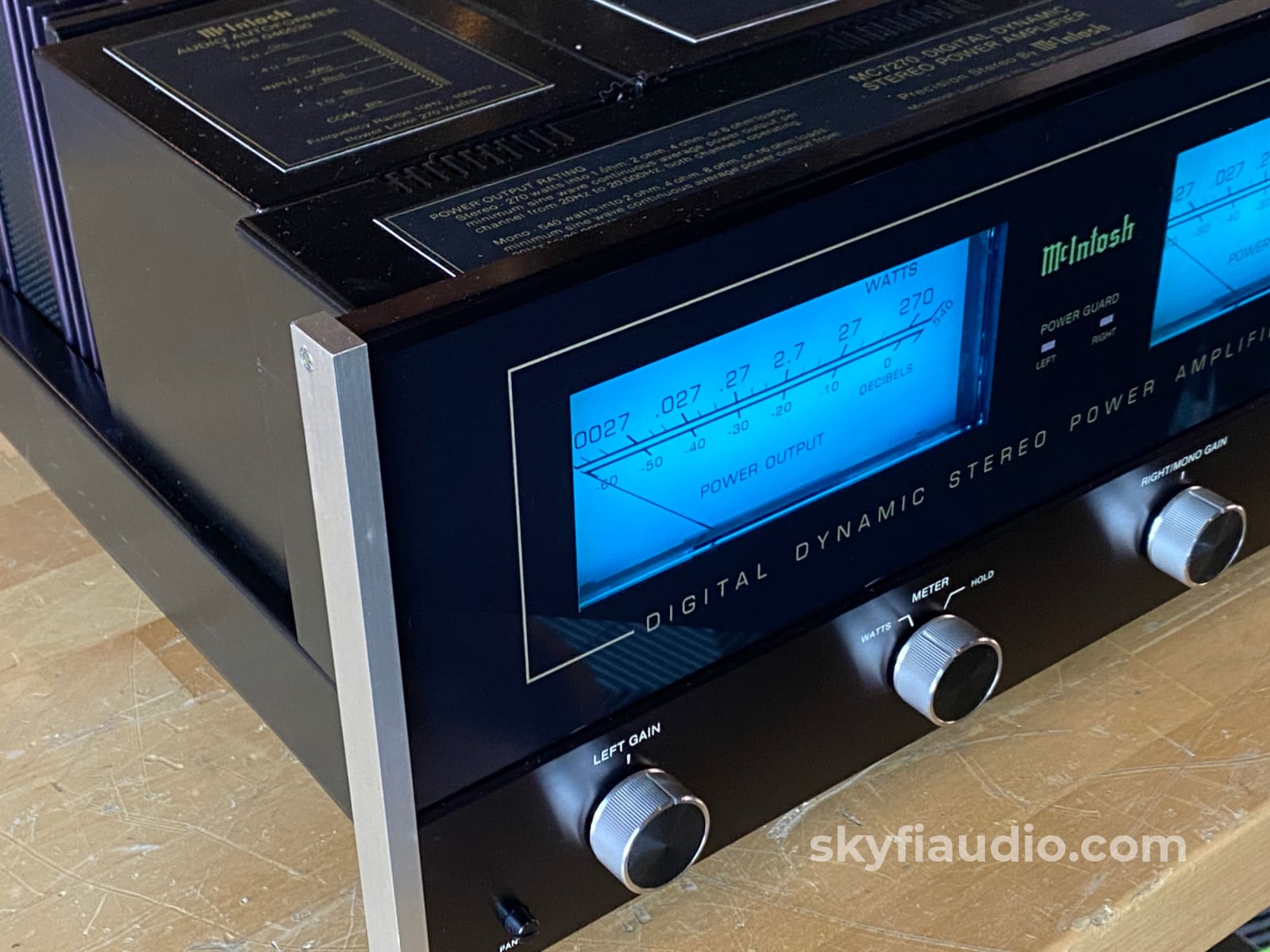
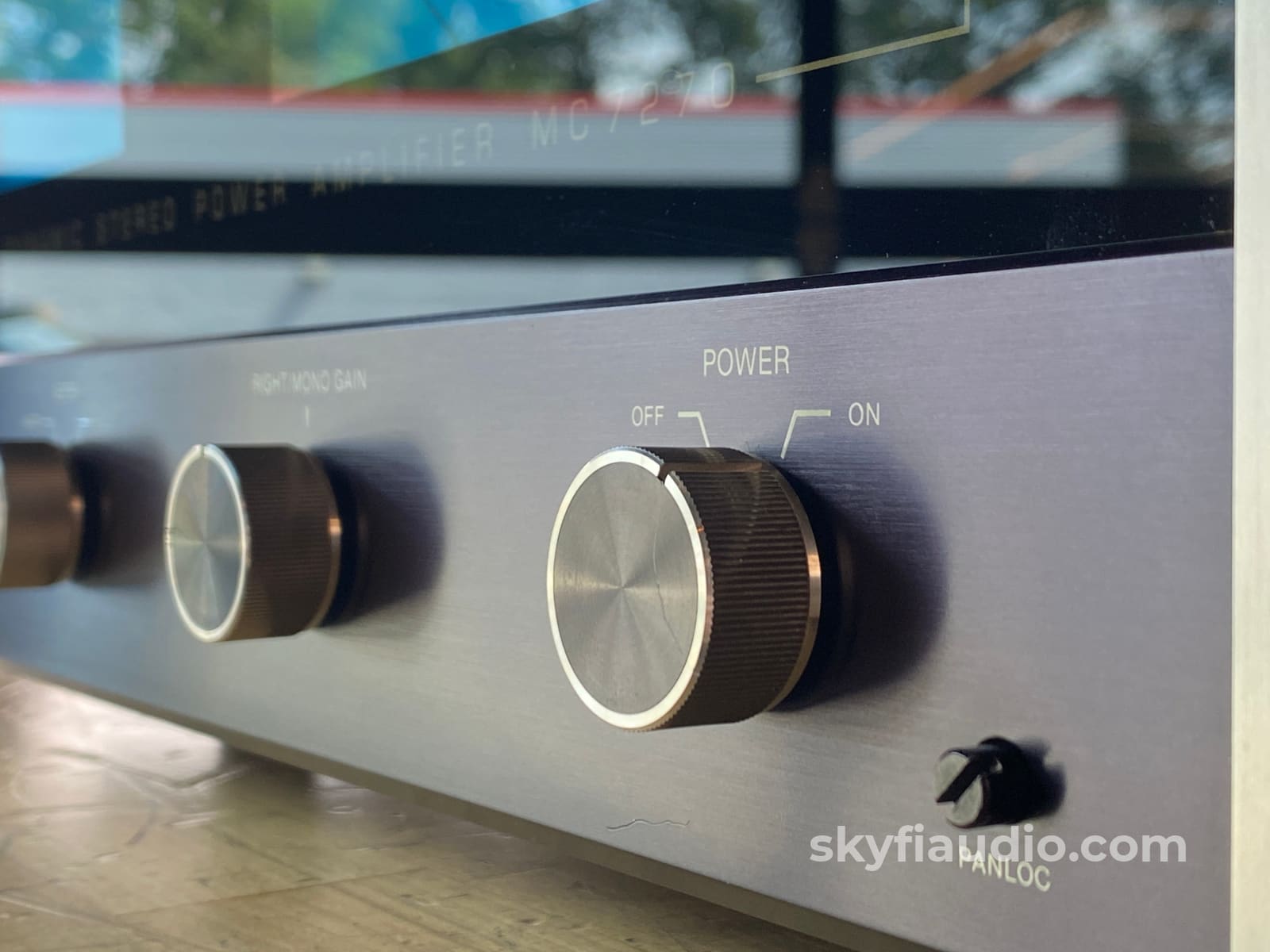
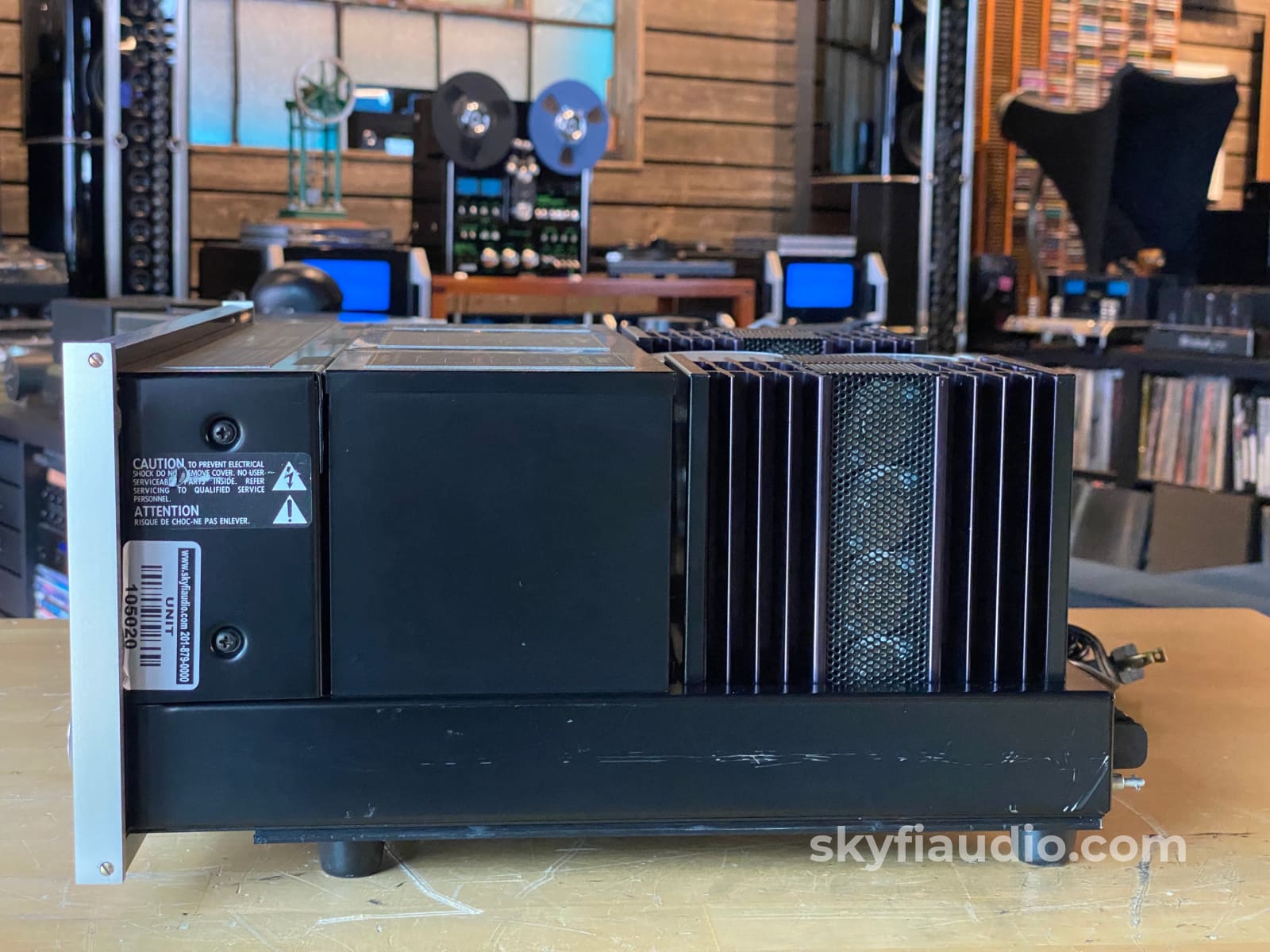
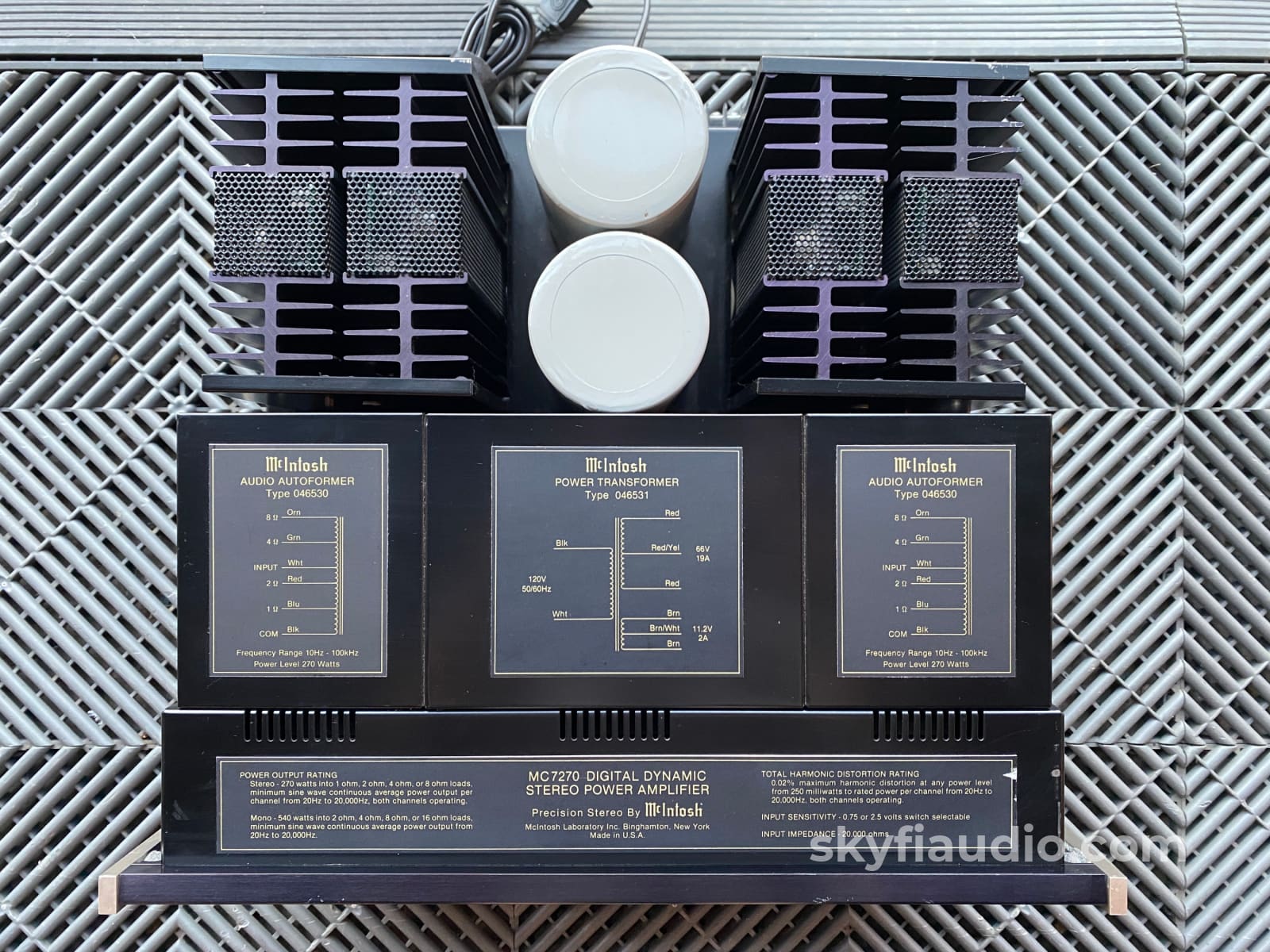
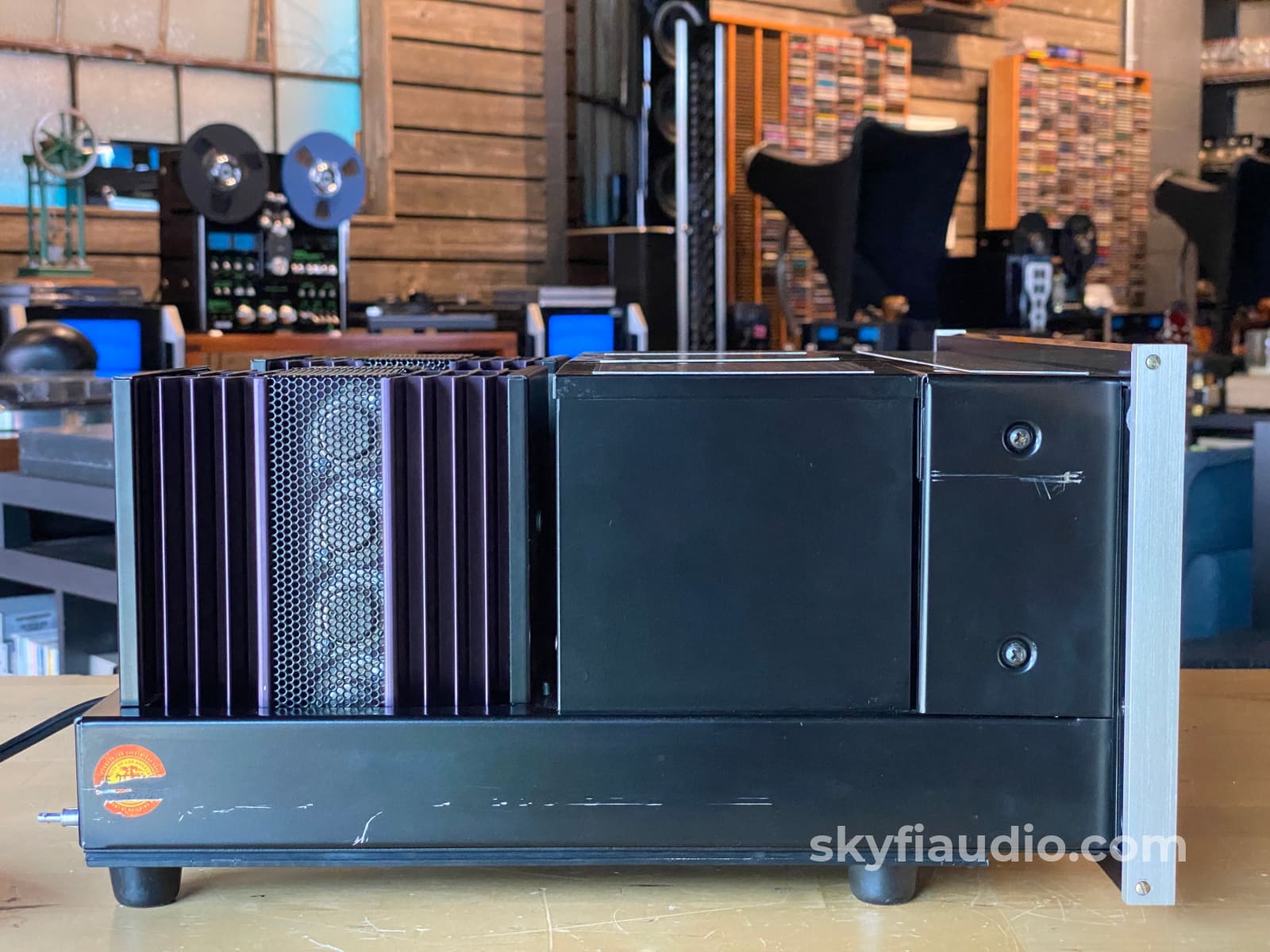

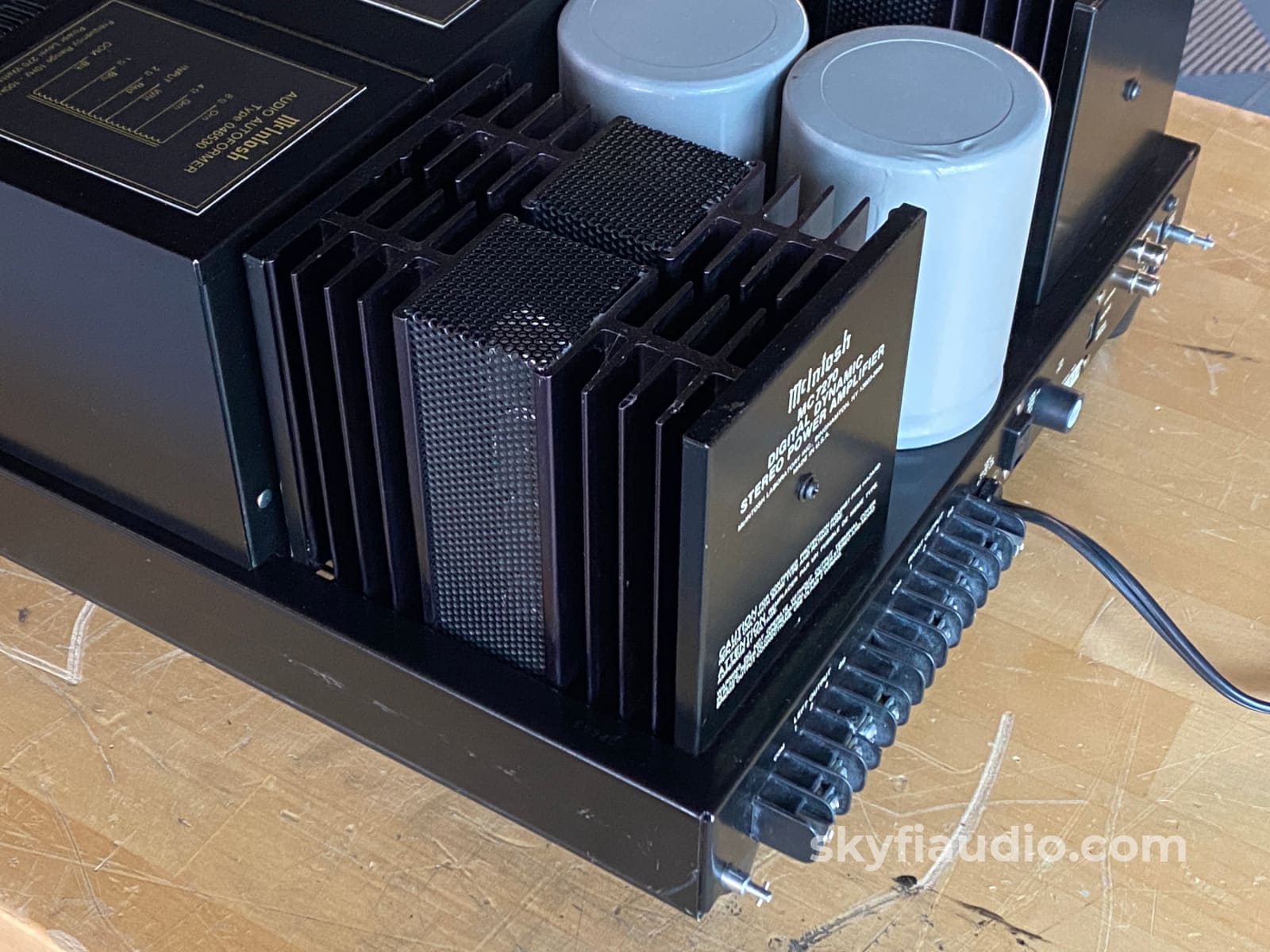
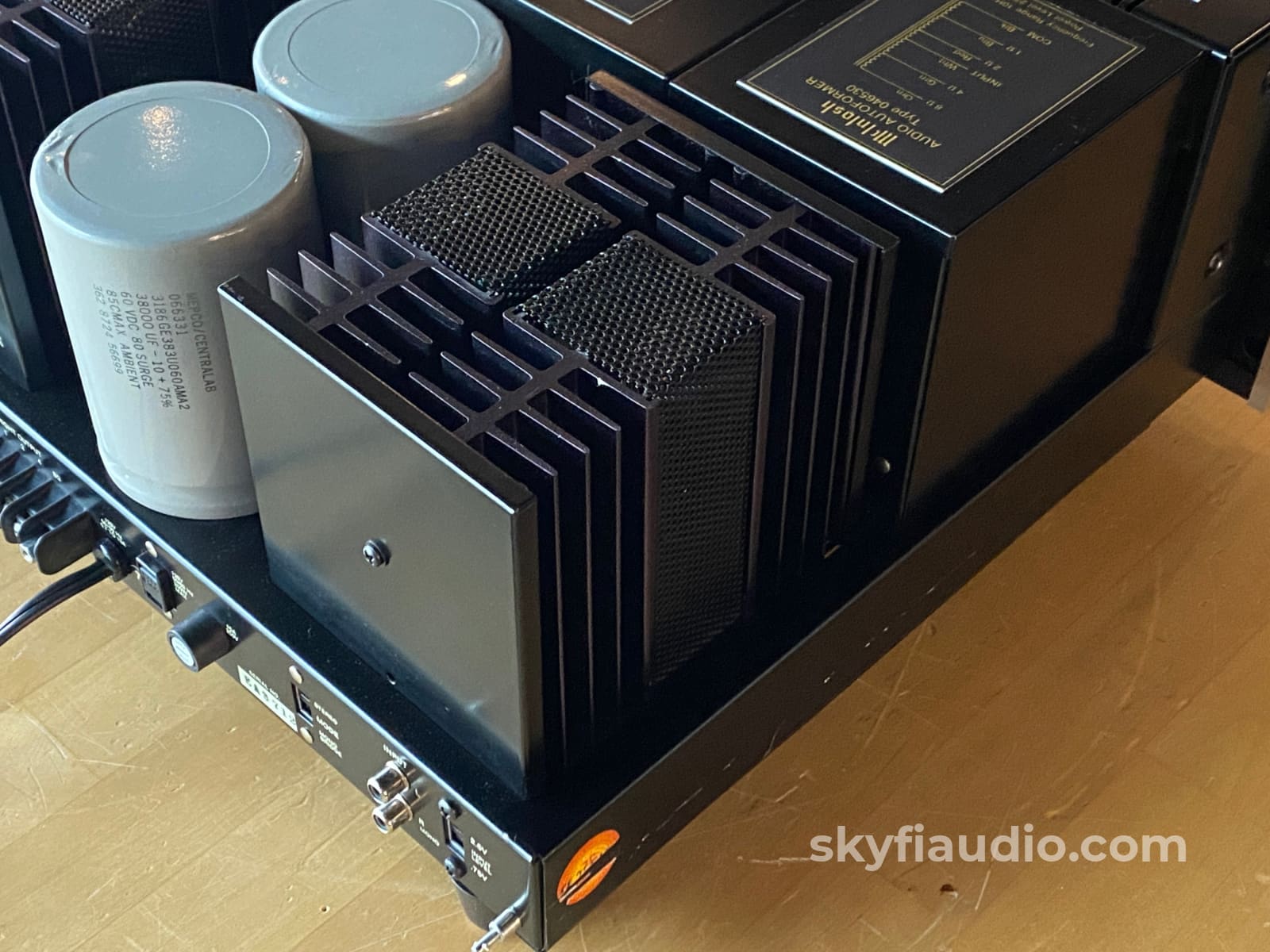
McIntosh MC7270 - Super Clean - 270W X 2 - Best Mc Amp From This Era
Free Shipping on Most Electronics - Excludes Speakers and Items Requiring Freight - Contiguous U.S. Only
Pickup currently unavailable at SkyFi 479

McIntosh MC7270 - Super Clean - 270W X 2 - Best Mc Amp From This Era
SkyFi 479
479 South Broad Street
Glen Rock NJ 07452
United States
The 7270 is by FAR one of our favorite vintage amps from McIntosh and by far one of our most popular sellers. They are easy to service, super reliable and built to last a century.
Aesthetically it meets all the requirements - large chassis, big blue meters, glass & metal faceplate, and BIG power.
This particular sample is in great shape and passed all of our internal tests with ease.
SkyFi Cosmetic Notes:
• Perfect Glass Faceplate.
• Light blemishes on top metal surfaces and sides.
• Lighting is original incandescent.
*Entire faceplate is a condition 8-9 and so is the top, but the sides do have a few scratches bringing overall condition to 7.
SkyFi Service Notes:
• Glass Replaced w/McIntosh Factory Official Replacement.
• Controls Cleaned.
• DC Offset and Bias Adjusted to Service Manual Specification.
• Meter Watt / Hold Switch Replaced.
• Meters Calibrated.
Brand Background:
McIntosh Laboratory is an American manufacturer of handcrafted high-end audio equipment based in Binghamton, New York. The company was founded in 1949 by Frank McIntosh. The company designs and produces audio amplifiers, stereo tuners and other consumer electronics products.
Ownership:
Single Owner
Connections:
RCA inputs, Screw Terminals for Speakers, Captive Power Cord
General Sound:
Big beautiful musical sound with little fatigue.
Cosmetic Condition:
7/10 = Good. One or two minor scratches. Well Maintained. See our detailed rating description here.
Working Condition:
Working perfectly and tested in our lab and listening room.
Included:
Just the unit and power cord.
Packing:
Original Manufacturers Packing
Reviews:
Click Here
Specs:
PERFORMANCE GUARANTEE
Performance Limits are the maximum deviation from perfection permitted for a Mclntosh instrument. We promise you that when you purchase a new MC 7270 from a Mclntosh franchised dealer, it will be capable of or can be made capable of performance at or exceeding these limits or you can return the unit and get your money back. Mclntosh is the only manufacturer that makes this statement.
PERFORMANCE
Mclntosh audio power ratings are in accordance with the Federal Trade Commission Regulation of November 4, 1974 concerning power output claims for amplifiers used in home entertainment products.
POWER OUTPUT
STEREO
270 watts minimum sine wave continuous average power output, per channel, both channels operating into 1 ohm, 2 ohms, 4 ohms, or 8 ohms load impedance, which is:
16.4 volts RMS across 1 ohm
23.2 volts RMS across 2 ohms
32.9 volts RMS across 4 ohms
46.5 volts RMS across 8 ohms
MONO-BRIDGE
540 watts minimum sine wave continuous average
power output into 2 ohms, 4 ohms, 8 ohms, or 16 ohms load impedance, which is:
32.9 volts RMS across 2 ohms
46.5 volts RMS across 4 ohms
65.7 volts RMS across 8 ohms
93.0 volts RMS across 16 ohms
OUTPUT LOAD IMPEDANCE
STEREO
1 ohm, 2 ohms, 4 ohms, and 8 ohms; separate terminals
are provided for each output.
MONO-BRIDGED
2 ohms, 4 ohms, 8 ohms, or 16 ohms, balanced to ground.
RATED POWER BAND
20 Hz to 20,000 Hz
TOTAL HARMONIC DISTORTION
STEREO
0.02% maximum harmonic distortion at any power level from 250 milliwatts to 270 watts per channel from 20 Hz to 20,000 Hz, both channels operating.
MONO
0.02% maximum harmonic distortion at any power level from 250 milliwatts to 540 watts from 20 Hz to 20,000 Hz.
INTERMODULATION DISTORTION
STEREO
0.02% maximum if instantaneous peak power output is 540 watts or less per channel with both channels operating for any combination of frequencies, 20 Hz to 20,000 Hz,
MONO
0.02% maximum if instantaneous peak power output is 1080 watts or less for any combination of frequencies, 20 Hz to 20,000 Hz.
FREQUENCY RESPONSE (AT ONE WATT OUTPUT)
20 Hz to 20,000 Hz +0 -0.25 dB.
10 Hz to 100,00 Hz +0 - 2 dB.
NOISE AND HUM
100 dB below rated output.
RATINGS
DAMPING FACTOR
Greater than 30
INPUT IMPEDANCE
20,000 ohms.
INPUT SENSITIVITY
Switchable: 0.75 volt or 2.5 volts-level control provided for higher input voltages.
POWER GUARD
Clipping is prevented and THD does not exceed 2% with up to 20 dB overdrive a 1 kHz.
GENERAL INFORMATION
POWER REQUIREMENTS
120 volts 50/60 Hz; 13 amps.
SEMICONDUCTOR COMPLEMENT
79 silicon transistors
31 silicon rectifiers and diodes
7 integrated circuits
MECHANICAL INFORMATION
SIZE
16 3/16 inches wide (41.1 cm) by 7 1/8 inches high (18.1 cm) by 14 1/2 inches deep (36.8 cm), including connectors. Knob clearance required is 1 1/4 inches (3.2 cm) in front of mounting panel.
FINISH
The front panel is a combination of glass and black anodized aluminum. The chassis is black.
Dimensions:
16 3/16 inches wide (41.1 cm) by 7 1/8 inches high (18.1 cm) by 14 1/2 inches deep (36.8 cm), including connectors. Knob clearance required is 1 1/4 inches (3.2 cm) in front of mounting panel.
Weight:
82 lbs.
Link to Manual:
Click Here
Recommended Cables:
Kimber Kable - RCA Interconnects - Better
Kimber Kable - RCA Interconnects - Best
Kimber Kable - Speaker Cables - Better
Kimber Summit Series Monocle XL Speaker Cables (PAIR) - Best
Kimber Summit Series BiFocal XL Bi-Wire Speaker Cables (PAIR) - Best If Applicable
Testing Process:
We start with a visual inspection of all internal components to make sure that there are no signs of heat stress or damage. Capacitors are checked for telltale signs of predictive failure including bulging, shrunken wrappers, or physical leakage. We also inspect the PCBs for discoloration from resistors or transistors that may have been running hot. On vintage units we often spot check select capacitors for value and ESR.
If the amplifier passes visual inspection, we move on to a controlled power on sequence using a Sencore safety analyzer to monitor current draw in real time. Once the amplifier is determined to be safe to operate, we connect it to full AC mains for function and power testing. We connect the speaker outputs of the amplifier to a Sencore PA81 Power Analyzer which acts as a dummy load, DC offset monitor, and oscilloscope interface. We start with a low level 1KHz test signal at the amplifier’s input and slowly increase its amplitude while monitoring the output on an oscilloscope for signs of noise, clipping, distortion, or improper channel balance. We continue increasing the signal level until the amplifier reaches clipping. At this point we take an output power measurement and compare it to the spec sheet of the amplifier to verify proper performance. If the device under test has both balanced and single ended inputs they are both tested at this time. We finish off the bench evaluation with a 1KHz square wave check and a 20Hz to 20KHz sine sweep to assess the amplifier’s frequency response characteristics. This battery of tests will usually reveal if the amplifier has any issues that need further attention.
Before the device leaves the bench, we perform a listening test with actual music using a variety of preferred test tracks. Our benches are outfitted with familiar monitor speakers which help us identify inconsistencies that will not always show up on our test gear. The main things that we are listening for are hum or noise with no signal present, proper center image, clicks, pops, or any other obvious undesirable audio characteristics.
If the unit passes all of these tests it is moved to our long term testing rig where we simulate real word operating conditions for 6-8 hours. This allows us to monitor the unit for signs of thermal runaway or intermittent issues that only crop up when the unit has fully come up to temperature.
Choose options
